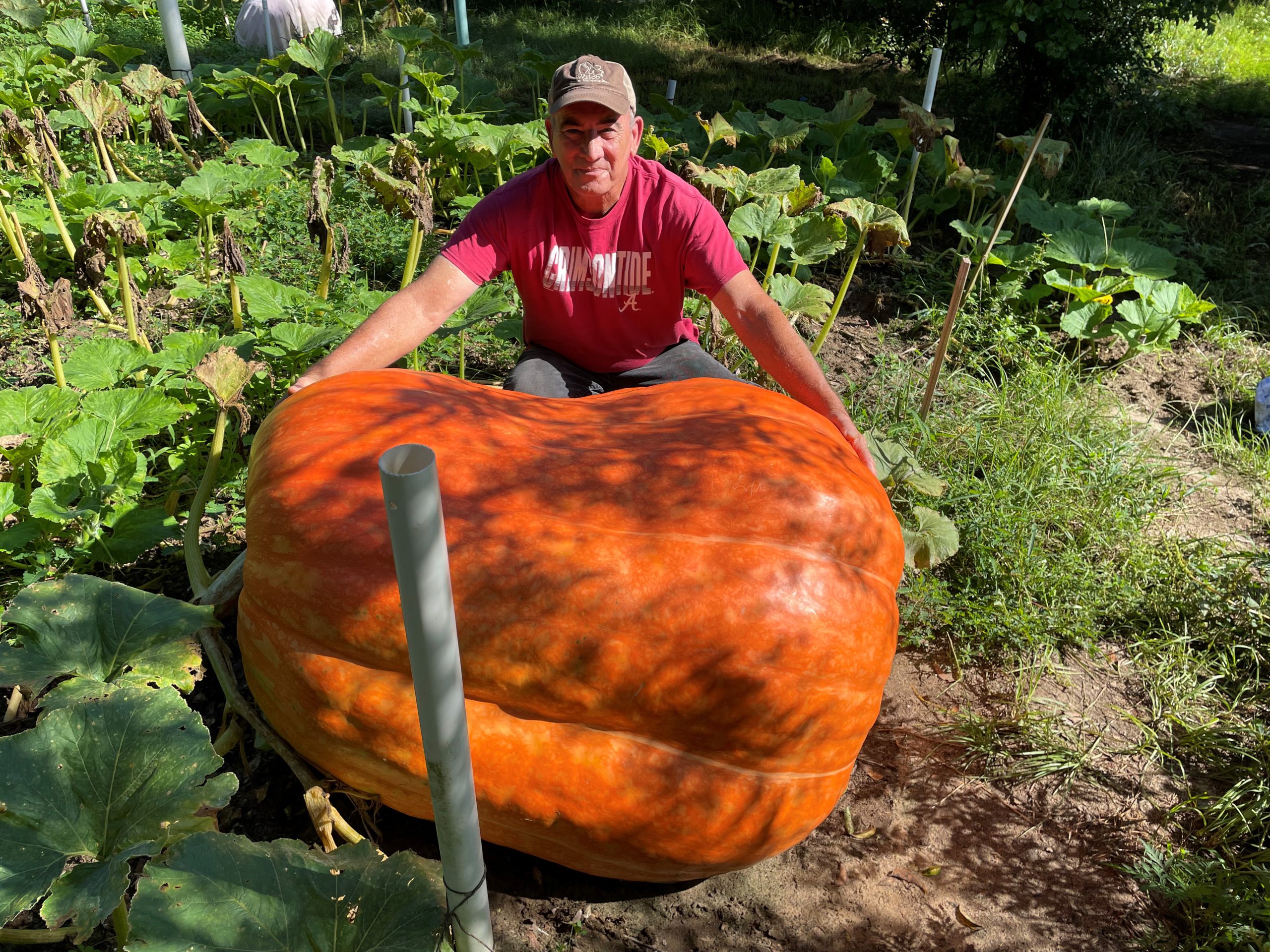Florida agriculture is huge, and sometimes, quite literally. From a 205-pound watermelon to a 45-pound spaghetti squash, some Floridians’ fruits and veggies have tipped the scales and broken state records.
Over the past 36 years, the University of Florida and its UF/IFAS Extension offices have kept record of such giants. The first entry being in 1986 with a 1-pound 3-ounce chicory plant in Alachua County.
The list is the legacy of James Stephens, professor emeritus of the horticultural sciences department and author of “Vegetable Gardening in Florida.” The list is still maintained by the department, and new entries are added as they come.
Record-breaking fruits and vegetables don’t just happen. Growing giants requires both planning and knowhow, said Matthew Lollar, UF/IFAS Extension Santa Rosa County commercial horticulture agent.
“One of the most important components is choosing the right seed,” Lollar said. “Some varieties are specifically bred to produce extra-large fruits and vegetables, and those are the seeds to start with.”
But it doesn’t stop there.
Things like timing fertilizer, rotating crops for soil health and setting up a drip irrigation system are all contributors to ensure maximum growth.
A drip irrigation system is ideal, Lollar said, because it allows water to drip directly to the root system and reduces the chances of water sitting in places where it can’t be used, like on the leaves, which increases the possibility for diseases to develop.
Likewise, it’s important to know the amount of water, type of soil and fertilizer that can meet the demands of the plant.
“If you have something that’s more leafy, like lettuce, the crop will need more nitrogen. But for something like pumpkin, it’ll need more potassium and phosphorus,” Lollar said.
However, it is important to highlight that large fruit and vegetables likely won’t have the same flavor as conventionally sized ones, Lollar said. When breeding for size, often other aspects like flavor are sacrificed
Unfortunately, that means no tasty giant pumpkin pie.

Beyond the science, growing huge fruits and vegetables takes patience and persistence.
One person who has mastered the art and science of giant fruit growing is Glenn Knight, who earlier this year grew a 622-pound pumpkin in Santa Rosa County.
Knight started the pumpkin from an Atlantic Giant Pumpkin seed he got from New Hampshire. By taking extra steps, like covering the pumpkin with a blanket to prevent sunburn and ensuring the necessary nutrients for growth, Knight eventually earned the record for the largest pumpkin in Florida.
With a little knowledge, patience and time, anyone can strive to grow giants. For anyone interested in embarking on such a journey, Lollar suggests contacting your local UF/IFAS Extension office to get expert gardening tips.
 12
12
